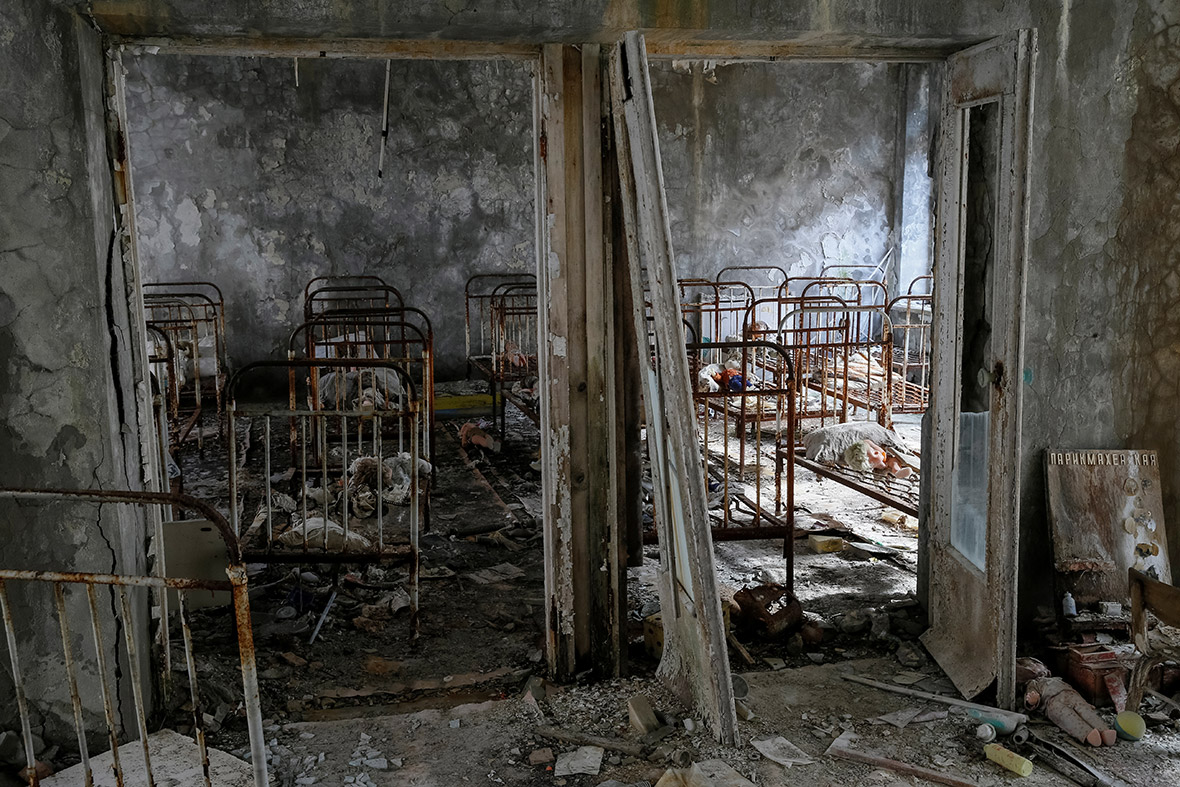The dolls of Chernobyl: Poignant symbols of nuclear horror, or macabre Instagram tableaux?
Creepy dolls litter the ghost town of Pripyat, but were they abandoned by fleeing children or placed there by visitors?
On 26 April 1986, a huge explosion in a reactor at the Chernobyl power plant in what was then the Soviet Union led to the world's worst nuclear accident. Thirty-one years later, the nearby town of Pripyat has become a magnet for "disaster tourists" keen to photograph the abandoned ghost town, with its derelict apartment blocks and rusting Ferris wheel. Children's dolls and stuffed toys litter the kindergarten, a poignant symbol of nuclear horror.


The schools and hospitals appear to have been left untouched since the town was hurriedly evacuated in 1986. As a 2011 Telegraph report poetically put it: "Hundreds of discarded gas masks litter the floor of the school canteen, Soviet propaganda continues to hang on classroom walls, and children's dolls are scattered about, left where their young owners dropped them in a hurry a quarter of a century ago."
However, all is not as it seems. Many of the dolls aren't randomly scattered where they were dropped, but artfully arranged on beds, with pillows to prop up their dusty heads, or juxtaposed with gas masks. These macabre tableaux have been placed by visitors, either as a tribute to the children who lived here, or – more probably – simply to make a more dramatic Instagram post.



Visitors are warned not to touch anything within the nuclear exclusion zone, but British writer and photographer Darmon Richter, who visited Pripyat in 2014, noted that: "Within my own group alone, I observed countless instances of tourists moving these artefacts around, or repositioning furniture for a better shot. I watched a photographer arrange stuffed bears and little dolls so that they sat in line along the edge of a bare, metal-framed bed. I'm sure it made for an excellent photograph... but if my group was by any way representative, then just imagine the cumulative effect of as many as 10,000 visitors interacting with the Zone every year."
Some of the dolls look far too new to have been lying in the rubble for 31 years, so are probably props brought in by "ruin porn" enthusiasts. Visitors don't just leave items – some have made off with residents' former personal possessions as macabre mementoes of their visit. While it is forbidden to remove anything from the radioactive zone, a large amount of portable items have been smuggled out by illegal trophy-hunters and scrap-dealers.
Several tour companies – such as "Chornobyl Tour" and Welcome to Chernobyl arrange group visits to Pripyat and other surrounding villages inside the 2,600 sq km exclusion zone. It is generally considered safe to visit the zone for short periods of time as the isotopes released in 1986 have since decayed. Radiation levels in sites seen on these tours range from 15 to several hundred micro-roentgens per hour – in order for radiation to kill, a person would have to be exposed to between 300-500 roentgens an hour. However, Ukrainian officials have suggested that Pripyat will not be inhabitable for another 20,000 years.











The town of Pripyat, just a few kilometres from Chernobyl, was built in the 1970s to house the plant's workers and their families. Around 50,000 people once lived here in apartment blocks on tree-lined streets. The town had 15 primary schools, five secondary schools and a technical college. There was a hospital, two sports stadiums and an amusement park.
The disaster killed 31 people immediately – almost all of them reactor staff and emergency workers. Between 30 and 50 emergency workers died shortly afterwards from acute radiation syndrome. The long-term effects are not yet known, but a report suggested that the eventual death toll could reach 4,000. Nobody can say for sure when the area will be safe again – some scientists estimate that it could be 20,000 years before people can live near the plant again.
© Copyright IBTimes 2025. All rights reserved.






















